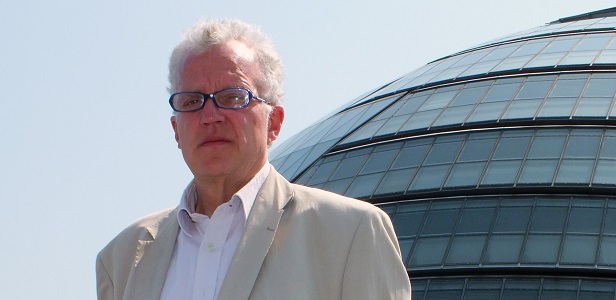Gosh, Bradley, I hate to be on the other side of an argument with you but I have to be. You are rightly seen as a god among us mere pedallers, a supremely dedicated athlete but also the self- deprecating boy next door. We love you, but that doesn’t mean you’re always right.
Bradley Wiggins is right to row back on his apparent call for helmets to be made compulsory for cyclists. It would be a terrible error. The Olympic gold medal-winner’s reaction to the death of a cyclist dragged under an Olympics bus was understandable, but mistaken even in terms of the incident: the victim died from injuries to his abdomen, not his head. To say: “Ultimately, if you get knocked off and don’t have a helmet on, then you can’t argue”, puts the blame in the wrong quarter.
Wiggins is right that cyclists must have some responsibility for their own safety. They should stick to the rules and stay alert at all times. But cars and lorries can be lethal weapons when driven beside vulnerable cyclists by people who don’t always follow the rules or behave sensibly themselves.
Superficially, making cyclists wear helmets seems to make sense. After all, the vital organ enclosed in little more than an eggshell on the top of our necks needs protecting. And no one would try to reverse the laws making it compulsory to wear seatbelts in cars or helmets on motorcycles.
But there are important differences. Cycling is a relatively slow-speed activity and cannot be compared with motorcycling or driving. Of course cyclists should wear helmets if they chose to. But there are two powerful reasons to oppose mandatory helmets.
First, it would reduce considerably the number of cyclists on the roads, as evidence from Western Australia, where helmets have been mandatory for 20 years, shows. Cycle use in Perth rose by 10 per cent a year between 1983 and 1989. But by 1994, two years after the law was introduced, the number of cyclists had fallen by 50 per cent.
Cost and practicality are deterrents, as is style, especially for the young. As Dr Mark Porter has said: “My children refuse to wear helmets. I would prefer them to ride without than not cycle at all as the benefits far outweigh any risks that would be mitigated by a helmet.”
And, Bradley, why not make motorists wear helmets? As 50 per cent of car occupants’ deaths are caused by head injuries, wearing a head band with a hard shell, such as the one designed at Adelaide University, would save many lives. But motorists balk at the idea. When I tweeted it yesterday, Edmund King, of the AA, said it was “a silly idea as drivers have airbags, crumble [sic] zones etc”. But they still die in droves.
Second, cycle helmets may increase accidents because of the well-documented phenomenon of risk compensation. Remarkably, in Western Australia, despite the fall in cycle use after the legislation, hospital admissions of cyclists remained the same. The reason may not be just that cyclists feel less vulnerable and take more risks, but because motorists treat cyclists wearing helmets differently.
In 2006 Dr Ian Walker, a traffic psychologist from the University of Bath, cycled around Salisbury and Bristol, using a sensor to record data from overtaking motorists. They came closer when he wore a helmet, because drivers felt he was likely to be more experienced, and gave him a wider berth when he wore a blonde wig.
There is a wider point. Making helmets compulsory suggests that cycling is dangerous and needs special equipment and protection. Only when old ladies and pregnant women feel safe cycling in our cities, as they do in Holland and Denmark, will the aim of protecting cyclists have been achieved.
Of course, there are risks in cycling, but that is true of any activity that involves movement. In London there were 16 cycle deaths last year, but as there are around 300,000 cycle trips in the capital every day that represents less than 1 fatality per 6 million trips. There have been 13 million journeys on the cycle-hire bikes introduced in London two years ago with no fatalities and very few injuries. Crucially, wearing helmets does not prevent the likelihood of accidents. That’s where the focus should be. Risks to cyclists can be reduced through appropriate road infrastructure, slowing traffic, creating cycle lanes and making it easier for cyclists to choose safer routes.
So, Bradley, it would be better to focus on making the streets safer for cyclists, rather than cyclists safer for the streets. The junction where the cyclist died on Wednesday evening is a prime example. It is a notorious blackspot, where two main roads meet and where “improvements” for cyclists before the Olympics involved creating a useless shared-use pavement that most cyclists ignore as it is not safer or practical.
Talking about cycle helmets and banning cyclists from listening to their iPods concentrates on the victims, not the guilty parties, who include not just bad drivers but politicians who refuse to acknowledge that cyclists deserve their place on the roads.
